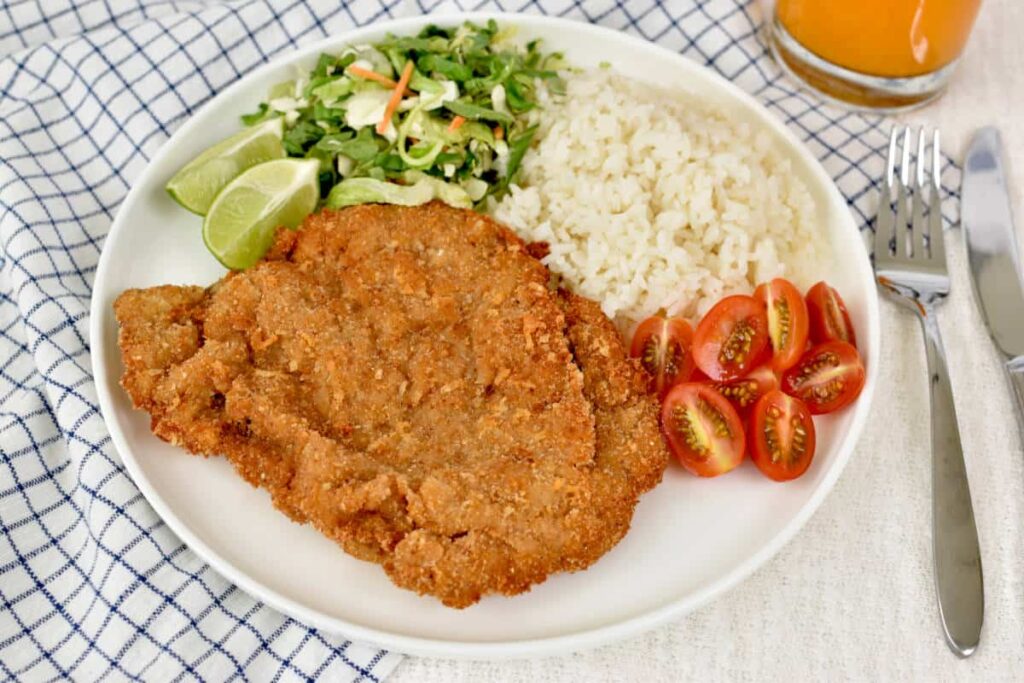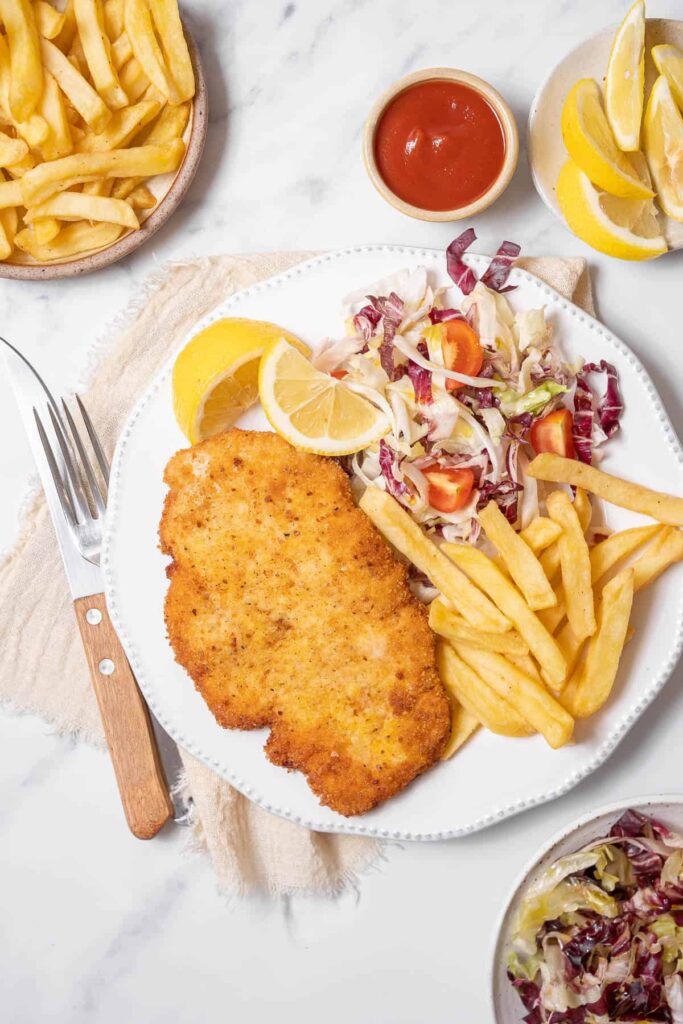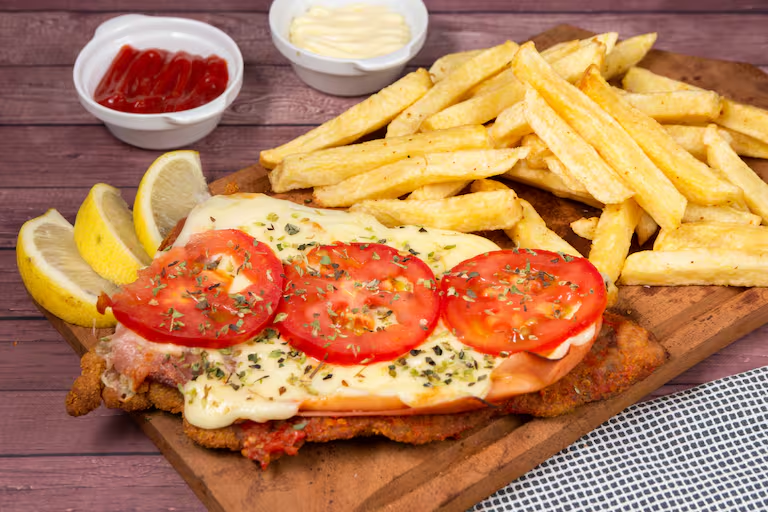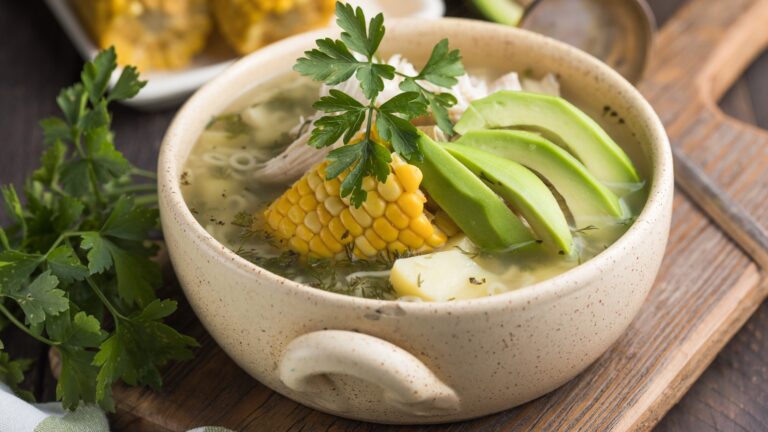Milanesa is a beloved dish with roots in Italian cuisine but has become a staple in various Latin American countries. This article will delve into the different types of Milanesa, focusing on the classic beef, chicken, pork, and vegetable versions.
We will explore their ingredients, preparation methods, regional variations, and adaptations. Whether you’re a seasoned cook or a curious foodie, this guide will provide you with a comprehensive understanding of Milanesa and its many delicious forms.
Milanesa de Res (Beef Milanesa)

Ingredients and Preparation
The traditional Milanesa de Res is made using thin slices of beef, typically from cuts like the top round or sirloin. The preparation involves tenderizing the beef slices to ensure they are thin and cook evenly. Here’s a step-by-step guide to making Milanesa de Res:
- Tenderize the Beef: Use a meat mallet to pound the beef slices until they are about 1/4 inch thick. This not only tenderizes the meat but also ensures it cooks quickly and evenly.
- Season the Meat: Season the beef with salt, pepper, and sometimes garlic or parsley for added flavor. You can also add a dash of paprika or cayenne for a bit of heat.
- Prepare the Breading Station: Set up three bowls: one with flour, one with beaten eggs, and one with breadcrumbs mixed with grated Parmesan cheese. For extra flavor, you can add herbs like oregano or parsley to the breadcrumb mixture.
- Bread the Beef: Dredge each slice of beef in flour, dip it into the beaten eggs, and coat it with breadcrumbs. Press the breadcrumbs firmly onto the meat to ensure an even coating.
- Fry the Beef: Heat oil in a large skillet over medium-high heat. Fry the breaded beef slices until golden brown on both sides, about 3-4 minutes per side. Avoid overcrowding the pan to ensure even cooking.
- Drain and Serve: Place the fried Milanesa on paper towels to drain excess oil. Serve with lemon wedges and a side of salad or potatoes. A squeeze of lemon juice brightens up the flavors beautifully.
Regional Variations
Milanesa de Res varies slightly depending on the region. In Argentina, it is often served with a simple salad and lemon wedges. In Uruguay, you might find it topped with a fried egg, while in Mexico, it could be served in a sandwich called a “torta de Milanesa” with avocado, refried beans, and pickled jalapeños. Each variation brings its unique twist to this classic dish, making it a versatile and beloved meal across different cultures.
In Bolivia, Milanesa is commonly served with rice, boiled potatoes, and a fried egg on top. In Paraguay, it’s often enjoyed with yucca or mandioca as a side dish. These regional differences highlight how Milanesa can adapt to local tastes and ingredients.

Milanesa de Pollo (Chicken Milanesa)

Ingredients and Preparation
Milanesa de Pollo follows a similar preparation process to its beef counterpart but uses chicken breasts. Here’s how to prepare Milanesa de Pollo:
- Prepare the Chicken: Slice the chicken breasts horizontally to create thin cutlets. Pound them to an even thickness if necessary. This ensures the chicken cooks evenly and stays juicy.
- Season the Chicken: Season the chicken cutlets with salt, pepper, and optionally some garlic powder or paprika. For extra flavor, marinate the chicken in buttermilk for a few hours before breading.
- Bread the Chicken: Dredge the chicken in flour, dip it into beaten eggs, and coat it with breadcrumbs mixed with a bit of grated cheese. For a crunchier texture, use panko breadcrumbs.
- Fry the Chicken: Heat oil in a skillet over medium-high heat. Fry the breaded chicken cutlets until golden brown and crispy, about 3-4 minutes per side. Ensure the oil is hot enough to avoid soggy breading.
- Drain and Serve: Place the fried cutlets on paper towels to drain. Serve with a fresh salad, mashed potatoes, or rice. A light drizzle of lemon juice enhances the flavor of the chicken.
Regional Variations
Chicken Milanesa is popular in many Latin American countries, each offering its unique twist. In Argentina, it might be served with French fries and a simple salad. In Mexico, Milanesa de Pollo can be found in tortas, garnished with lettuce, tomato, avocado, and mayonnaise. In Venezuela, it is often served with rice and black beans, providing a hearty and balanced meal.
In Peru, Milanesa de Pollo is sometimes served with a side of tangy salsa criolla, a mix of onions, lime juice, and cilantro. In Colombia, it can be paired with patacones (fried green plantains) and aji, a spicy sauce. These regional touches bring a unique flair to the dish, showcasing the versatility of Milanesa.

Milanesa de Cerdo (Pork Milanesa)

Ingredients and Preparation
Pork Milanesa, or Milanesa de Cerdo, uses thin slices of pork loin or tenderloin. The preparation is straightforward and similar to other types of Milanesa:
- Prepare the Pork: Slice the pork loin into thin cutlets. Pound them to ensure even thickness. This helps the pork cook quickly and remain tender.
- Season the Pork: Season the pork cutlets with salt, pepper, and any other preferred spices like cumin or oregano. For a deeper flavor, marinate the pork in a mixture of olive oil, garlic, and herbs for a few hours.
- Bread the Pork: Dredge the pork in flour, dip it in beaten eggs, and coat it with breadcrumbs. You can add a bit of ground black pepper and paprika to the breadcrumb mix for extra flavor.
- Fry the Pork: Heat oil in a skillet over medium-high heat. Fry the breaded pork cutlets until golden brown, about 3-4 minutes per side. Make sure the oil is hot before adding the pork to prevent it from absorbing too much oil.
- Drain and Serve: Place the fried pork on paper towels to drain. Serve with a side of mashed potatoes, rice, or a fresh salad. A dollop of homemade chimichurri sauce pairs wonderfully with the pork Milanesa.
Regional Variations
Pork Milanesa is a versatile dish that can be found in various forms across Latin America. In Argentina, it might be served with a side of creamy mashed potatoes or potato salad. In Chile, Milanesa de Cerdo is often accompanied by a tomato and onion salad. In the Dominican Republic, it is sometimes served with a side of fried plantains, adding a touch of sweetness to the savory dish.

In Puerto Rico, Milanesa de Cerdo can be served with arroz con gandules (rice with pigeon peas) and tostones (twice-fried plantains). In Cuba, it might come with moros y cristianos (black beans and rice) and a slice of lime. These regional adaptations reflect the local ingredients and culinary traditions.
Milanesa de Vegetales (Vegetable Milanesa)

Ingredients and Preparation
For those who prefer a vegetarian option, Milanesa de Vegetales offers a delightful alternative. It can be made using various vegetables like eggplant, zucchini, or even cauliflower. Here’s a basic preparation method for vegetable Milanesa:
- Prepare the Vegetables: Slice the chosen vegetables into 1/4 inch thick pieces. For eggplant or zucchini, you may want to sprinkle salt on the slices and let them sit for 30 minutes to remove excess moisture. Pat them dry before breading.
- Season the Vegetables: Season the vegetable slices with salt, pepper, and any other desired spices. For added flavor, you can marinate the vegetables in a mix of olive oil, garlic, and herbs.
- Bread the Vegetables: Dredge the vegetable slices in flour, dip them in beaten eggs (or a vegan substitute like flax eggs), and coat them with breadcrumbs. You can use seasoned breadcrumbs or panko for extra crunch.
- Fry the Vegetables: Heat oil in a skillet over medium-high heat. Fry the breaded vegetable slices until golden brown, about 3-4 minutes per side. Ensure the oil is hot enough to get a crispy exterior.
- Drain and Serve: Place the fried vegetable Milanesa on paper towels to drain. Serve with a fresh salad or a side of your choice. A light drizzle of balsamic reduction can add a touch of sweetness and acidity.
Vegan and Vegetarian Options
For a vegan Milanesa, you can use plant-based milk and flax eggs or aquafaba as a substitute for eggs. You can also use gluten-free breadcrumbs for those with dietary restrictions. Vegetable Milanesa can be served with a variety of sides, including quinoa salad, roasted vegetables, or a simple green salad.
For a twist, try making a Milanesa de Garbanzos (Chickpea Milanesa). Blend chickpeas with spices, form them into patties, and follow the breading and frying steps. This version is rich in protein and perfect for vegans.

Variations and Adaptations
Milanesa a la Napolitana
Milanesa a la Napolitana is a popular variation that originated in Argentina. It involves topping the fried Milanesa (usually beef or chicken) with ham, tomato sauce, and melted cheese, similar to a parmigiana. Here’s how to make it:

- Prepare the Milanesa: Follow the preparation steps for beef or chicken Milanesa.
- Add the Toppings: After frying the Milanesa, place it on a baking sheet. Top each piece with a slice of ham, a spoonful of tomato sauce, and a slice of mozzarella cheese. For added flavor, sprinkle some oregano and grated Parmesan on top.
- Bake: Place the Milanesa in a preheated oven at 350°F (175°C) until the cheese is melted and bubbly, about 10-15 minutes. This step ensures the flavors meld together.
- Serve: Serve the Milanesa a la Napolitana with a side of French fries or a simple green salad. A garnish of fresh basil adds a fragrant touch.
Fusion Recipes
Milanesa has been adapted into various fusion recipes, combining elements from different cuisines. Some popular fusion variations include:
- Asian-inspired Milanesa: Use panko breadcrumbs for an extra-crispy coating and serve with a soy-ginger dipping sauce. You can also add a sprinkle of sesame seeds to the breadcrumbs for an additional layer of flavor.
- Milanesa Tacos: Slice the fried Milanesa into strips and serve in tortillas with avocado, salsa, and cilantro. Add a squeeze of lime and a drizzle of chipotle mayo for a zesty finish.
- Milanesa Sandwiches: Create a Milanesa sandwich using ciabatta bread, arugula, roasted peppers, and a spicy aioli. For a twist, add caramelized onions and a slice of provolone cheese.
These fusion recipes highlight the versatility of Milanesa and its ability to adapt to different culinary traditions. Experimenting with various ingredients and serving styles can lead to exciting new dishes.
FAQs
Conclusion
Milanesa is a versatile and beloved dish that can be enjoyed in many forms, from the classic beef, chicken, and pork versions to vegetarian and vegan alternatives. Its adaptability and delicious flavor make it a favorite across Latin America and beyond. Whether served with traditional sides or in creative fusion recipes, Milanesa continues to be a culinary delight that brings comfort and joy to many.
Disclosure: Our blog contains affiliate links to products. We may receive a commission for purchases made through these links. However, this does not impact our reviews and comparisons. We try our best to keep things fair and balanced, in order to help you make the best choice for you.







